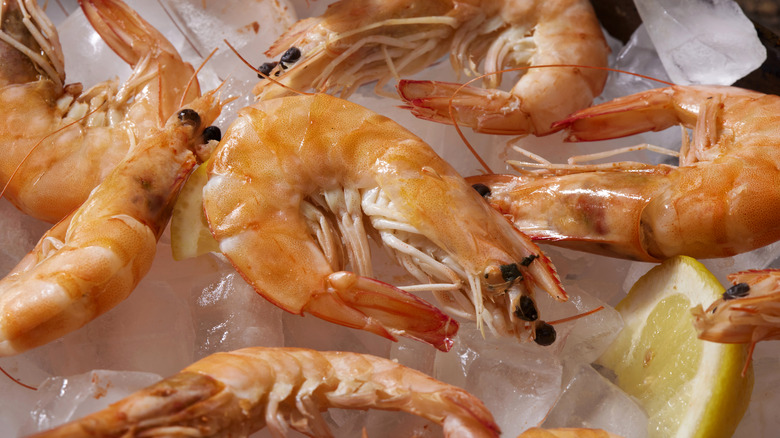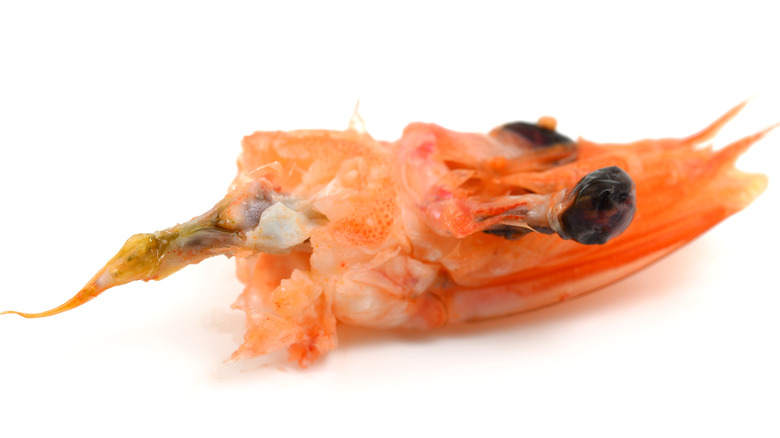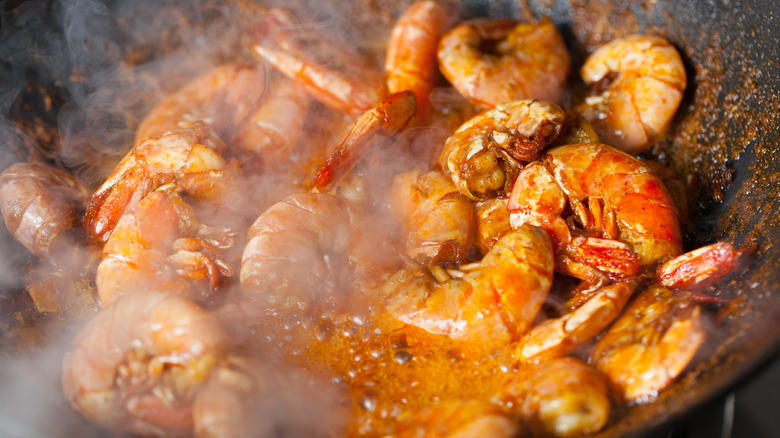How To Remove Shrimp Heads Like A Total Pro
Few departments of the supermarket seem as imposing as the seafood section. It can also be exhausting to consider the innumerable potential cooking methods you can choose when preparing aquatic protein sources. For example, even when the endless list of oceanic options is narrowed down to simply shrimp, there is no shortage of cooking tips to make your crustacean as delicious as possible. You will also have to consider whether or not your shrimp's shell is safe to crunch into. Several practical considerations are also unique to shrimp, like the fickle fine motor task of peeling and deveining your dinner.
However, the most challenging part of the painstaking shrimp preparation process is undoubtedly contending with the crustacean in the kitchen when it comes time to separate the shrimp from its head. Fortunately, the science behind shrimp shell removal has been honed to an incredibly fine point, and by following a few simple instructions, even an amateur home chef can be beheading like a professional.
How to behead your shrimp
When you purchase your shrimp from the store, it's recommended that you opt for a bag in which the individual shrimp have the heads attached. Picking off a shrimp's skeletal helmet once it has been cooked may be tedious, not to mention messy, but fortunately, many guides recommend removing the shrimp's shell before you even begin to cook the shellfish. On the flip side, leaving the shrimp encased in its exoskeleton can actually ramp up the flavor considerably.
Despite the fact that shrimps have existed for over 190 million years, we are unquestionably in the greatest possible time period in terms of crustacean culinary innovation. As such, the intimidating act of beheading your shrimp is no longer an unthinkable task for a home cook to take on. Take a firm grip on your thawed shrimp up near its gills, and quickly pull the pieces of the shrimp's shell apart. You can then use the detached head as a handle to aid in deveining the shrimp. Once you've thoroughly mastered the process — and where your fingers should be situated for shrimp shelling — you can use a paper towel to guard your hands against viscera splatters. If the idea of manually shelling your shrimp is simply too much, it's also an option to wholly sever the shrimp's head with a sharp knife. The excess crustacean craniums can either be discarded or saved for stock.
Should you cook shrimp in the shell?
Though it's easy to understand why an amateur cook would prefer to thoroughly prep your crustacean ingredient before you even consider introducing it to either seasoning or something with a sizzle, there are a number of arguments for leaving your shrimp shells on throughout the entire cooking process. In fact, leaving the shrimp encased in its protective shell is an excellent way to preserve its subtle and succulent flavor. Furthermore, the shell contains considerable quantities of natural proteins and sugars, which are the precise ingredients needed to kickstart the Maillard reaction, the chemical process by which your crustaceans will become caramelized.
It is also worth noting that there is a certain shrimp cooking style called peel-and-eat style shrimp, where diners are served shrimp that is still entirely encased in its shell, albeit with a small incision used for deveining. The shrimp is then dropped into a flavorful boiling bath, resulting in a tasty feast.


